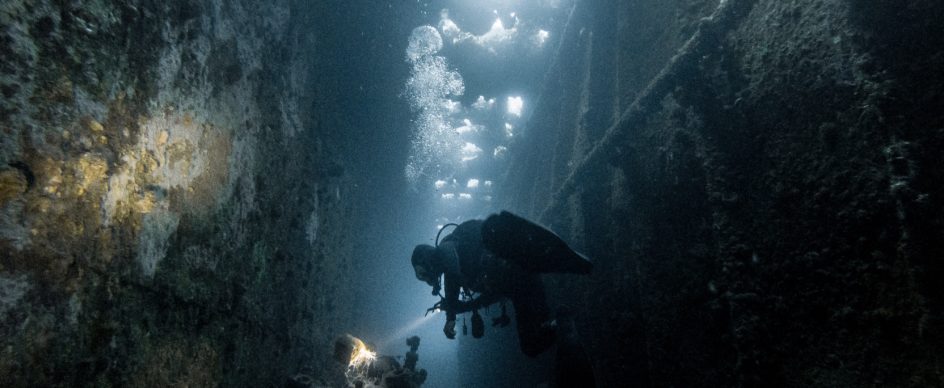
Top 5 shipwreck dives in Malta
- Jun 12, 2020
...one of the top shipwreck diving spots in the world
As the famed descendent of Atlantis, it should come as no surprise that Malta is one of the top shipwreck diving spots in the world.
The Maltese archipelago’s forte lies in its excellent variety of wrecks, and needless to say, there are wrecks of all types, shapes and sizes. If you’re a novice, you can easily feast your eyes on World War II battleships. If you’re a divemaster, you can spend all your days in Mala exploring cargo vessels with flourishing reefs as well as planes and submarines from all eras of Malta’s rich maritime history.
In this article, we will outline the top 5 shipwreck diving spots in Malta, making it easier for you to plan your dives once you land in Malta.
Let’s dive right in!
Blenheim Bomber
Xorb l-Ghagin‘s Second World War-era wreck can only be accessed by boat, making the diving trip a more adventurous experience.
The Blenheim Bomber dates back to 1941. It was originally sent out on a perilous bombing mission, which had to stop straight after departure, due to the enemy finding out about it. The pilot and his two crew members were forced to leave the aircraft and leave the bomber at sea.
Nowadays, this bomber lies at 42m below sea level on a sandy surface. The wings, fuselage and propellers are still, for the most part, intact, making it the perfect underwater World War II museum piece. The remains of the De Havilland Mosquito can be found a little further away, and can, therefore, be investigated on the same dive.
HMS Stubborn
Cammell Laird Birkenhead originally built the 66-long S-class Marine coined HMS Stubborn. The Stubborn was launched during WWII – on the 11th of November 1942, to be exact. The sub was equipped with 44 experienced crew members, 13 torpedoes and 6 accompanying 21-inch bow tubes, a 3-inch gun forward as well as a 20mm Oerlikon machine gun at the stern.
In 1945, the Stubborn met its demise after being hit, losing its tail fin. The Royal Navy kept using it for target practice. Nowadays, the Stubborn keeps mesmerising war enthusiasts underwater: the wreck, situated approximately 4km off Qawra Point, lies 56m below sea level, is still in pristine condition and can be thoroughly explored without many difficulties.
Imperial Eagle
If you visit Qawra Point, you need to make sure that you visit the Imperial Eagle. The 25m-long Eagle was built in Sunderland by J. Crown and Sons. Its original name was that of the New Royal Lady. It was also known as the Crested Eagle, before receiving its final name – Imperial Eagle – in 1958.
The ship’s first voyage between the two main islands of Malta and Gozo took place on the 1st of June 1958. The vessel was finally laid to rest in 1999, after being deliberately submerged, and now lies proudly upright – a mere 10 minutes away from the shore. Interesting features include the statue of Christ present in an underwater valley nearby, the Eagle’s massive bow, its propeller as well as the wide variety of fish that have made the Eagle their home.
Karwela
In 2006, the 50m-long MV Karwela was scuttled at Xatt l-Ahmar in Gozo. The Karwela goes back to the ’50s; it officially started operating in 1957 as MS Frisia II. After arriving in Malta in 1986, she was renamed “Karwela” and for many years served as a passenger ferry.
Nowadays, you can easily reach the Karwela wreck from shore. Curiously, an old Volkswagen Beetle that was submerged as a prank is now one of the Karwela’s most talked-about features. The wide midship staircase is one of the most popular entry points to start exploring this 63-year-old vessel.
Um El Faroud
The Um El Faroud currently exists in the form of a shipwreck in the pristine waters of Wied iz-Zurrieq. However, it had a previous life as a Libyan Oil Tanker which operated between Italy and Libya.
Unfortunately, while it was docked in Valletta, an explosion occurred which led to the death of 9 shipyard employees, and the vessel suffered considerable structural damage. This meant that it could not operate anymore. Three years after the tragic accident in 1995, the Um El Faroud was scuttled and started a new life as an artificial reef.
Today, the impressive wreck lies upright and is a mere 10-minute swim from the shore. If you’re an experienced diver, it can be covered in 1 or 2 dives.
When best to dive in Maltese waters?
Malta is blessed with excellent weather all year round, which means that you can plan a diving holiday without much difficulty. In winter and spring, daytime temperatures are usually between 15°C and 22°C. At 18°C, the water is a bit chilly but not wholly unpleasant, and offers the best underwater visibility.
In summer and autumn, the weather is hot and humid, and daytime temperatures are usually in the 30-degree range. Underwater visibility is slightly reduced, and shallow water temperatures are usually in the 20-25°C range.
Where to stay?
If you’re planning to visit Malta, Casa Ellul in Valletta is your perfect launchpad. Set in a 19th-century building, this small, luxury hotel fuses modern amenities and traditional Maltese stylings, guaranteeing a memorable stay.
The boutique hotel is situated at the heart of Valletta, meaning that restaurants, cafes, shops and museums are mere minutes away. Furthermore, Valletta has excellent links to all areas of the island, making it an excellent choice for a diving trip.
With only nine suites, the Casa Ellul staff members do their utmost to offer a personalised service that transforms and heightens each guest’s experience, making your visit to Malta one that you’ll surely remember forever.




